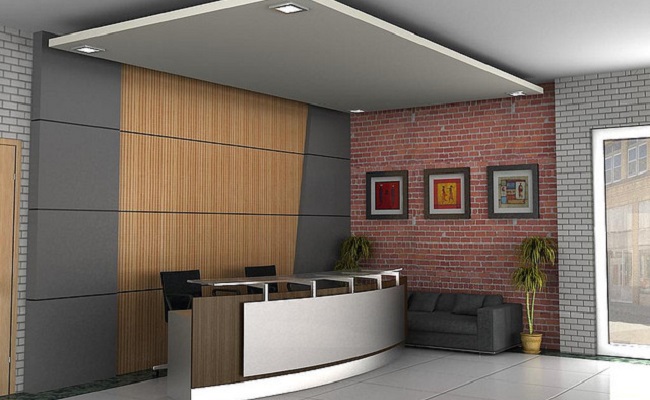The history of wallpapers dates back to possibly even before the 18th century when these were used as decorative materials for walls for people who found tapestries expensive to use. Unlike today’s wallpapers, which mostly feature patterns, wallpapers back then mainly featured scenes. Wallpapers were primarily manufactured in England and France, after which China followed suit and started manufacturing high-quality wallpapers somewhere around the end of the 17th century. These were expensive due to being hand-painted, which made them a common feature in the palaces. And then came the 20th century when the wallpapers came back in full glory as an essential wall furnishing element for homes and offices. They came in multiple designs, they came in various colors and they came in numerous textures. They also popularized major advantageous characteristics like being able to block Wi-Fi waves, protecting walls from falling during earthquakes, or lighting purposes using LEDs. Wallpapers have transitioned from being woodblock-printed and stenciled to now being digitally printed.
Now let’s talk about why using wallpapers is an excellent idea for your home and office and why possibly putting up wallpapers may not be that excellent a thought.
Advantages of Using Wallpaper:
One of the various advantages of using wallpapers on your walls is that they mostly turn out cheaper than paints and offer you much more variety than paints. Here are some reasons why wallpapers are more feasible for your home or office walls.
1. Wallpapers are available in numerous designs, patterns and textures.
2. The peel and stick wallpapers are super easy to handle and use. These can easily be applied, removed and replaced.
3. Wallpapers offer longevity.
4. These are washable, which makes them super convenient.
5. Wallpapers are easy to maintain.
6. These can be used to personalize spaces by using theme-based wallpapers for different areas of your home or office. These can be removed without leaving behind patches.
7. Wallpapers can be used to hide defects in the wall like unevenness or patchiness and that too, without much preparation
8. Wallpapers are a natural and eco-friendly option to adorn your walls with. Its adhesives are also way less hazardous than paints.
Disadvantages of Wallpaper:
1. Wallpapers can turn out to be more expensive than paint sometimes.
2. In case of dampness in walls, the wallpapers start to separate from the walls, which then need to be either reattached or pasted back.
3. You need to have a whole lot of accuracy to match the patterns of the wallpapers.
4. Wallpapers cannot be applied on raw textured or concrete walls.
5. Direct or harsh sunlight may affect the wallpapers. They may even burn out when exposed to direct sunlight.
Having talked about why you should and why you should not use wallpapers, let us now talk about the types of wallpapers available in the market to be a tad bit more knowledgeable when you go out to the market.
Types of Wallpaper
Liner Wallpaper
This type of wallpaper is made from paper or fiberglass. This is mainly used as a base for more delicate and expensive wallpapers. This works well if you are trying to hide the defects in your walls. It is useful for hiding wall defects. Liner wallpaper can be used alone or can also be painted. Its added advantage is that it is easy to apply and remove.
Vinyl Wallpaper
Vinyl wallpaper consists of a composed, printed paper with a coating of a layer of vinyl. This one is the type of wallpaper most commonly used in homes and offices. It is highly durable and its durability depends on the thickness of the vinyl coating. The thicker the vinyl coating, the more durable the wallpaper is. This type of wallpaper can withstand steam and thus, it is suitable even for kitchens and bathrooms. It is the most commonly used type of wallpaper currently because of its high durability. The thicker the vinyl coating layer is, the more durable the wallpaper will be. Vinyl paper can be used in kitchens and bathrooms, as it can of withstanding steam. It is easy to maintain and can be washed as well.
Printed Wallpaper
This one again is a commonly used type of wallpaper. It is available in a wide variety of patterns and colors. Like all other artworks, digitally printed wallpapers are less expensive and more commonly used than hand-painted ones. The one thing to be kept in mind is that the printing ink used in digitally printed wallpapers is water-based, thus making digitally printed wallpapers unsuitable for kitchens and bathrooms.
Flock Wallpaper
Flock wallpapers are one of the most expensive types known for their three-dimensional patterns. These patterns are created from a velvet-like fiber printed on a paper base. Its velvety texture gives a feeling of luxury and thus, despite its drawbacks, this type is widely used. These are difficult to maintain and in case of stains, highly tedious to wash. This is suitable for the guest room or master bedroom where there is less to and fro people.
Foil Wallpaper
In this wallpaper type, polished metal foil is used as the base, which gives a shiny metal look. Before using this wallpaper type, you have to get your wall corrected or covered with lining paper first because the shiny effect highlights the wall defects.
Bamboo Wallpaper
This one is a handcrafted wallpaper made from natural bamboo and stuck to the paper. It is environment friendly and is not washable. Putting up the bamboo wallpaper involves a delicate treatment of gluing and installing.
Mylar Wallpaper
In this one, there is a printed paper base covered with a polyester film, which gives it a wet and shiny appearance. This also highlights the wall defects like the foil wallpaper and thus, you must either line your wall or get it corrected before putting up the mylar wallpaper. This is washable and easily removable. It is most commonly used for kitchens and bathrooms.
Contact Noida Interiors for all your interior designing requirements

